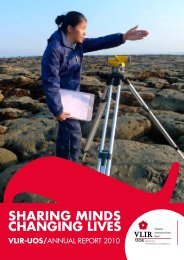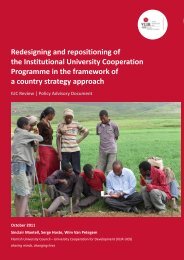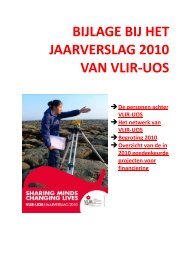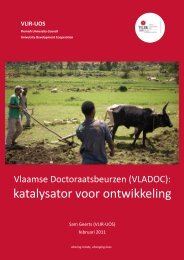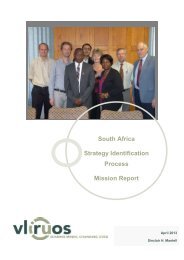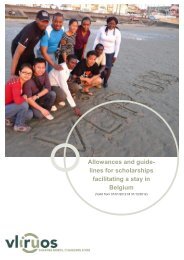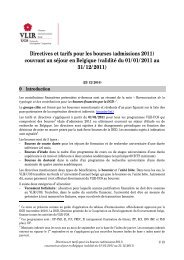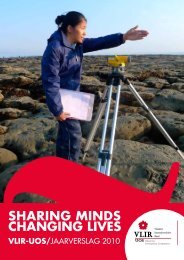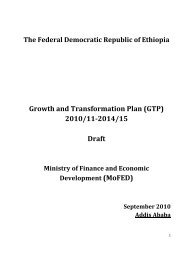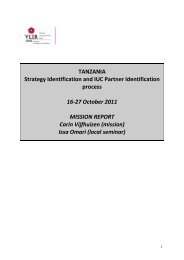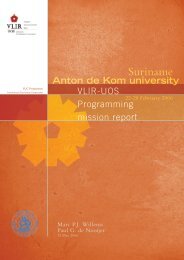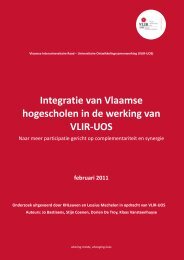Education Sector Development Program - VLIR-UOS
Education Sector Development Program - VLIR-UOS
Education Sector Development Program - VLIR-UOS
Create successful ePaper yourself
Turn your PDF publications into a flip-book with our unique Google optimized e-Paper software.
<strong>Education</strong> <strong>Sector</strong> <strong>Development</strong> <strong>Program</strong> IV<br />
Concerning quality of school infrastructure<br />
and facilities<br />
Many schools, in particular at primary level, are<br />
constructed in non-durable materials, which<br />
decrease children’s motivation to attend and<br />
remain in school. The problem of poor quality<br />
facilities is especially serious in remote rural<br />
regions, thus contributing to problems of equity.<br />
The absence of support for school construction<br />
through government funds forces the poorest<br />
communities to invest in facilities. A minimum<br />
standard of construction should be imposed on<br />
these community-built schools to ensure both<br />
safety and an acceptable quality.<br />
Main challenges<br />
Concerning teachers’ and leaders’ development<br />
• Need to further strengthen teacher training and qualifications at primary and secondary<br />
levels<br />
• Leadership and management capacities at institutional level remain weak<br />
• Female candidates for pre-service training and candidates from rural areas and<br />
indigenous groups are underrepresented<br />
• Insufficient well qualified teachers for maths and science<br />
• Quality of pre-service training needs improvement: better teaching materials, more<br />
adequate practical training, more adequate teaching methods<br />
• Continuous Professional <strong>Development</strong> (CPD) is not given enough attention by a<br />
significant number of school leaders and teachers<br />
• The number of females in leadership positions is very low<br />
Concerning Curriculum, Textbooks and Assessment<br />
• Lack of focus on higher order thinking in learning-teaching processes and examinations<br />
• Better use needs to be made of the findings from the National Assessment of Student<br />
Achievement<br />
• Limited availability of teaching/learning materials<br />
Concerning planning and resource use by schools<br />
• The capacity to implement SIP at school and woreda level is still limited<br />
• ABE Centers have not been involved in the roll out of the planning process to date<br />
• The SIP monitoring and evaluation system is not yet well established<br />
Concerning use of Information Communications Technology<br />
• Still low level of confidence amongst a number of teachers on the benefits of ICT<br />
• Serious shortage of plasma TV in emerging regions<br />
• Lack of accessories for maintenance of plasma TV’s in all regions<br />
• Lack of computers and servers in secondary schools<br />
Concerning quality of school infrastructure and facilities<br />
• Many schools, in particular at primary level, and in remote rural regions, are constructed<br />
in non-durable materials.<br />
• The absence of support for school construction through government funds, obliges<br />
poor communities to invest in facilities<br />
Concerning Student Achievement<br />
• Despite significant investment in quality inputs like teachers,books,buildings and<br />
related infrastructures, national learning assessments show deteriorating trends in<br />
student achievement<br />
21



